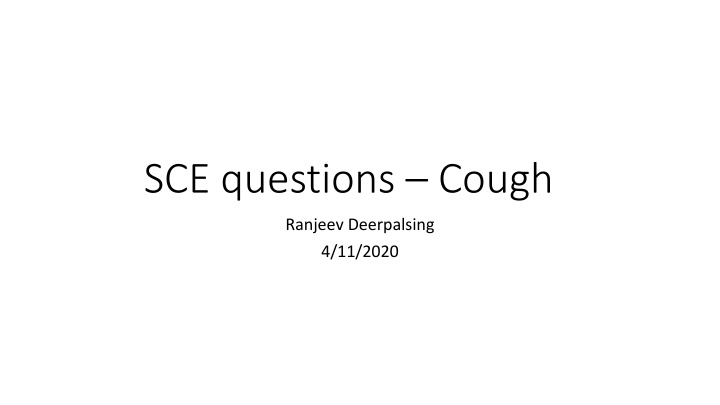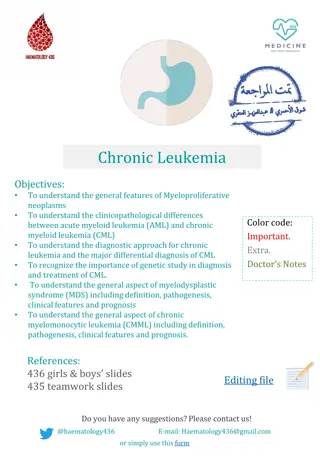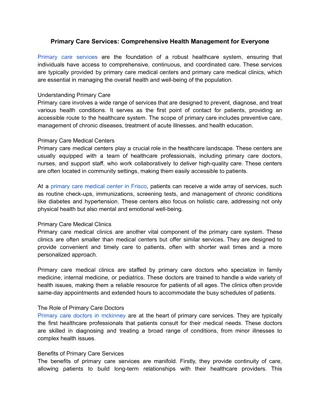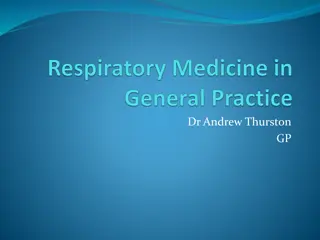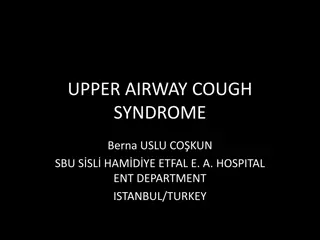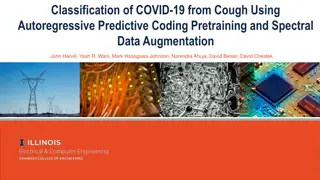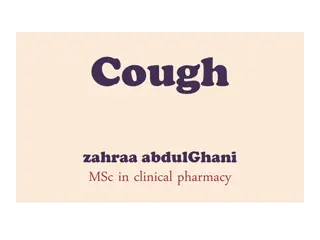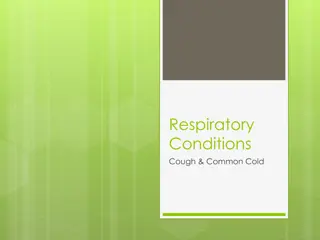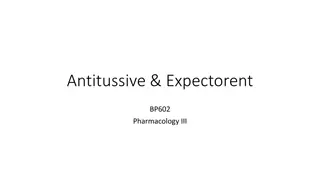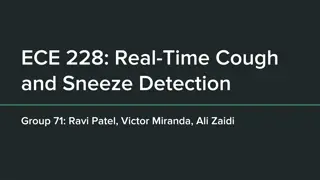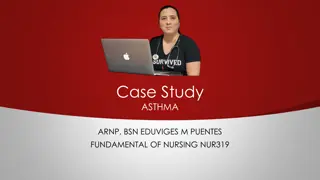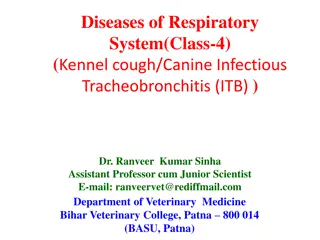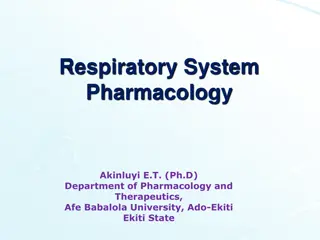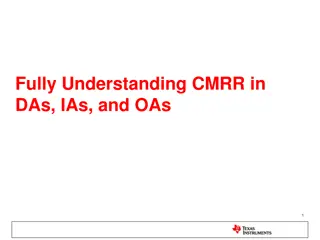Differential Diagnosis of Chronic Cough in Primary Care
A 54-year-old man with a persistent cough prompts consideration of initial investigations like chest X-ray and pulmonary function tests. For a 40-year-old woman with a persistent cough, initial management options include sequential trials of steroids, a proton pump inhibitor, and nasal spray. These cases highlight the importance of tailored approaches to diagnosing and managing chronic cough based on clinical presentation and history.
Download Presentation

Please find below an Image/Link to download the presentation.
The content on the website is provided AS IS for your information and personal use only. It may not be sold, licensed, or shared on other websites without obtaining consent from the author.If you encounter any issues during the download, it is possible that the publisher has removed the file from their server.
You are allowed to download the files provided on this website for personal or commercial use, subject to the condition that they are used lawfully. All files are the property of their respective owners.
The content on the website is provided AS IS for your information and personal use only. It may not be sold, licensed, or shared on other websites without obtaining consent from the author.
E N D
Presentation Transcript
SCE questions Cough Ranjeev Deerpalsing 4/11/2020
Question 1 A 54 year old gentleman presents to the clinic with a troublesome cough for the past 10 weeks. He is a never smoker and is usually fairly fit and active. He describes the cough as non productive and intermittent. Sometimes, this is triggered by exercise. Clinical examination is unremarkable. Which of the following investigations would you do next? A. Oesophageal studies B. Bronchoscopy C. CT D. Sputum culture E. Spirometry and reversibility testing
Question 1 A 54 year old gentleman presents to the clinic with a troublesome cough for the past 10 weeks. He is a never smoker and is usually fairly fit and active. He describes the cough as non productive and intermittent. Sometimes, this is triggered by exercise. Clinical examination is unremarkable. Which of the following investigations would you do next? A. Oesophageal studies B. Bronchoscopy C. CT D. Sputum culture E. Spirometry and reversibility testing
Question 1 - explanation XR chest (given persistent cough > 8 weeks) and PFTs should be first line tests (XR not listed in options) Oesophageal studies may be relevant further down the line if significant reflux suspected as contributory CT and bronchoscopy may both be of value as additional tests down the line depending on initial tests Sputum C+S of limited use here given non productive cough
Question 2 A 40 year old retail manager presents with a persistent cough. Her symptoms started with coryzal symptoms about 6 weeks ago. Cough was initially productive of greenish phlegm but following antibiotics, is now dry, persistent and unpleasant resulting at times in incontinence. She also complains of intermittent chest pains. She is struggling with her usual activities because of the cough. Bloods are unremarkable; spirometry is normal XR chest:
Which is the most appropriate management plan? A. Sequential trials of steroids, proton pump inhibitor (PPI), and nasal spray, as per the anatomical diagnostic protocol B. A further course of antibiotics C. Reassurance, advice regarding simple supportive measures, and ask her to come back if the cough has not resolved in another few weeks D. A trial of montelukast E. Arrange CT under the 2 week wait pathway
Which is the most appropriate management plan? A. Sequential trials of steroids, proton pump inhibitor (PPI), and nasal spray, as per the anatomical diagnostic protocol B. A further course of antibiotics C. Reassurance, advice regarding simple supportive measures, and ask her to come back if the cough has not resolved in another few weeks D. A trial of montelukast E. Arrange CT under the 2 week wait pathway
Question 2 - Explanation Diagnosis here is a subacute cough (3-8 weeks duration) and is usually post infectious in nature. Viral infection is associated with a transient hypersensitivity of the cough reflex that usually resolves within two weeks but can persist for longer in some patients. Persistence is more common if the cough is associated with influenza, Mycoplasma pneumoniae, or Bordetella pertussis infection. NICE guidelines on acute cough (2019) suggest antibiotics may be helpful in patients who are frail, elderly, or who have significant comorbidity and are at risk of complications Routine use of steroids are not recommended and Montelukast has been shown to be ineffective in patients presenting to GP with post infectious cough Simple measures include sweets, honey and lemon, menthol, steam, and maintaining adequate hydration.
Question 3 Which of the following statements is correct with regards to the pharmacological treatments of cough? A. Codeine is an effective antitussive in chronic cough where other methods have not been effective B. About 10% of patients respond to low dose MST in chronic cough C. Gefapixant (P2X3 receptor antagonist) at higher dose is associated with taste related adverse effects in around 60% of patients in clinical trials D. Gabapentin has no role in the management of chronic cough due to significant side effect profiles E. There is strong evidence for use of combined medications containing Dextromethorphan in acute cough
Question 3 Which of the following statements is correct with regards to the pharmacological treatments of cough? A. Codeine is an effective antitussive in acute/subacute cough where other methods have not been effective B. About 10% of patients respond to low dose MST in chronic cough C. Gefapixant (P2X3 receptor antagonist) at higher dose is associated with taste related adverse effects in around 60% of patients in clinical trials D. Gabapentin has no role in the management of chronic cough due to significant side effect profiles E. There is strong evidence for use of combined medications containing Dextromethorphan in acute cough
Question 3- Explanation A No benefit of codeine over placebo in 2 RCTs looking at acute cough B Around half patients respond to low dose morphine but does have significant side effect profile with drowsiness/constipation C Correct answer. Merck presented COUGH-1 and COUGH-2 at ERS Sept 2020 D - Some evidence to suggest can be helpful in some and to start at low dose given significant side effects E Meta-analysis suggests effectiveness but poor quality studies
Question 4 A 63 year old gentleman with a background of COPD presents with persistent cough for the past 3 months. He has used 3 rescue packs in that time with limited benefit. He feels generally tired and has pains whilst coughing. He is currently on Ultibro 1 puff OD, Salbutamol PRN, Carbocisteine 750mg TDS. You note recent Eosinophils of 0.4. He still smokes. You arrange for spirometry and XR chest in clinic: FEV1 = 0.75 (42% predicted) FVC = 1.56 (70% predicted) TLCO = 48% predicted KCO = 54% predicted
Question 4 What is the most appropriate next step? A. Switch Ultibro to triple therapy such as Trimbow BD via spacer B. Send off sputum culture and start work up for addition of Azithromycin C. Bronchoscopy D. Urgent CT on the 2WW pathway E. Consider addition of Roflumilast for COPD management
Question 4 What is the most appropriate next step? A. Switch Ultibro to triple therapy such as Trimbow BD via spacer B. Send off sputum culture and start work up for addition of Azithromycin C. Bronchoscopy D. Urgent CT on the 2WW pathway E. Consider addition of Roflumilast for COPD management
Question 4 -explanation XR chest shows LUL collapse which in this patient should be very suspicious for underlying malignancy Whilst there may be a role of addition of ICS to inhaled therapy, investigation for underlying malignancy should be prioritized Azithromycin is unlikely to benefit here given patient is current smoker and also vignette has not provided details about true exacerbation frequency Bronchoscopy may be considered down the line but CT showed be first step as there may be less invasive diagnostic test should CT be suggestive of cancer Roflumilast, as an add-on to bronchodilator therapy, is NICE recommended as an option for treating severe chronic obstructive pulmonary disease in adults with chronic bronchitis, only if: the disease is severe, defined as a forced expiratory volume in 1 second (FEV1) after a bronchodilator of less than 50% of predicted normal, and the person has had 2 or more exacerbations in the previous 12 months despite triple inhaled therapy with a long-acting muscarinic antagonist, a long-acting beta-2 agonist and an inhaled corticosteroid.
Question 5 A 56 year old lady has been referred with a persistent cough. This has been going on for over a year now and she has been trialled on various medications including Salbutamol, Clenil, Prednisolone, double dose Lansoprazole and nasal sprays. None of these have affected her symptoms significantly. She describes severe cough attacks which can be unpredictable. DH = Fluoxetine 20mg OD The cough attacks are so severe that she has now stopped going out of the house. She describes an uncomfortable throat sensation. She has had both XR and CT chest arranged from primary care which have been normal. Lung function tests including flow volume loop are essentially unremarkable.
Question 5 Which of the following would be most appropriate? A. A re-trial of high dose PPI with addition of H2 antagonist B. Referral to specialist SALT for further assessment and management C. A trial of Morphine MR 5mg BD D. CT scan of neck E. Bronchoscopic assessment and consideration of endobronchial biopsy
Question 5 Which of the following would be most appropriate? A. A re-trial of high dose PPI with addition of H2 antagonist B. Referral to specialist SALT for further assessment and management C. A trial of Morphine MR 5mg BD D. CT scan of neck E. Bronchoscopic assessment and consideration of endobronchial biopsy
Question 5 - explanation This lady has a chronic cough. Further re trial of PPI/H2A unlikely to be of benefit in this scenario. There are some suggestions of possible ILO Sudden attacks and throat symptoms; there is good evidence for role of specialist SALT in assessment and management Option C may be a reasonable option but SALT assessment may be preferable first given non pharmacological approach Nil in history to suggest concern for neck malignancy -normal flow volume loop suggests no large airway obstruction
